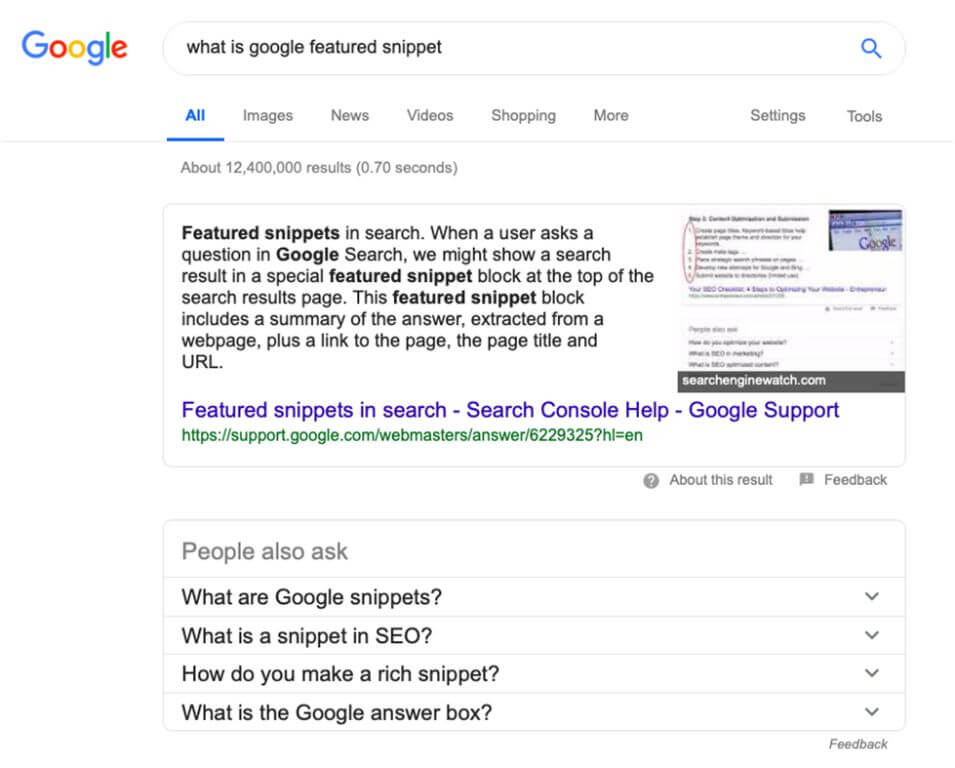If you’ve ever Googled “Is SEO dead,” you’ll find opposing views about whether or not search engine optimization is still relevant today.
Naysayers see the diminishing popularity of SEO as a sign of its impending doom. But most marketers believe otherwise. According to Ascend2’s 2024 Digital Marketing Strategies Survey, SEO is among the most effective digital tactics for 50% of marketing influencers.
SEO is dynamic and evolving—so much so that if you don’t keep up with the latest trends, your website will always lag behind your competitors.
One of the SEO trends to watch out for in 2024 is user experience. Good UX equates to good SEO. In recent years, the best SEO practices have favored optimizing for humans more than for search engines.
So if you’ve been ignoring this critical SEO component, put your innovation hat on and optimize your website for these factors that affect Google search results.
1. Mobile-First Indexing

Google has changed how it crawls and ranks web pages. The search engine used to crawl every desktop web page of a website to determine its search ranking. Now, it primarily does so to mobile web pages before crawling desktop pages. So Google prioritizes mobile pages over desktop pages in its search results.
How to Optimize for Mobile-First Indexing
- Use the same content on your mobile site as your desktop site. An SEO test found that mobile pages with hidden content rank lower than those that show full content. So that Google won’t ignore your web pages, make sure no content is hidden behind tabs, accordions, or menus.
- Switch to responsive design. If you’re still using an m-dot domain for your site’s mobile version, consider moving to responsive design (in which your mobile and desktop versions are similar.)
- Implement Accelerated Mobile Pages (AMP). Google’s AMP enhances mobile UX by speeding up page loading time. Use it to make your website more accessible to mobile users.
- Ensure your website is mobile-friendly. To check if your web pages are easy to use on a mobile device, use website audit tools like the Mobile-Friendly Test.
2. Voice Search

Google’s Mobile Voice Study reveals that 41% of adults and 55% of teenagers use voice search at least once a day. If you don’t optimize your site for voice search, you’ll be missing out on the opportunity to make it accessible to people who talk to their phone aside from just typing their search queries.
How to Rank in Voice Search
- Use conversational keywords. Unlike text-based queries, voice queries are longer and more conversational, usually in the form of a question. For your keyword research, use tools like Answer the Public that can help you find the questions that people naturally ask.
- Create FAQ pages. Google’s voice search algorithm picks up FAQ pages because they contain conversational keyword phrases in a question-and-answer format.
- Optimize your Google My Business (GMB) listing. Help your target customers find you on Google by claiming your GMB listing. A lot of voice searches consist of local queries, so make the most of your GMB listing by editing and verifying your business information.
- Be mobile-friendly. Your site must be easy to use on smartphones and tablets, as voice search happens a lot on mobile devices.
- Earn a spot in the featured snippet. Based on this study, a featured snippet returns around 40% of all voice search answers. Read the next section for tips on how to rank for featured snippets.
3. Featured Snippets

Before, everyone wanted to be number 1 on Google’s search engine results page (SERP). But now, everyone’s scrambling to reach Position 0, also known as the featured snippet. It isn’t surprising because if your page appears in a featured snippet, you’re on top of everybody else.
How to Rank Your Content in Featured Snippets
- Know the questions people are asking. Before you create your content, identify which questions people are actually searching answers for. Check out the “People also ask” section and Google’s related keywords at the bottom of its SERP.
- Create how-to and Q&A content. These types of content are great opportunities for earning featured snippets, as they provide answers to your audience’s questions.
- Provide concise answers. Give substantial answers, but keep them short, too. Various studies found that the optimal word count for paragraph snippets is from 40 to 60 words.
- Break up your content with subheaders. Use H2, H3, or H4 subheaders to organize your content and rank in featured snippets.
4. RankBrain
RankBrain is the artificial intelligence (AI) system that Google uses to filter its search results and return the most relevant and useful results. According to Google, RankBrain is one of the three most important ranking factors (the other two being content and inbound links).
How to Optimize Your Content for RankBrain
- Create content that sounds human. Use natural language—write as if you’re talking to a human. According to Google Webmaster Trends Analyst Gary Illyes, your content won’t get optimized for RankBrain if it sounds like a machine.
- Optimize for medium-tail keywords. These keywords have higher search volumes than long-tail keywords but are less competitive than shorter keywords. When you use a medium-tail keyword, Google RankBrain automatically ranks your content for that term plus many other related keywords.
- Make your content more engaging. Make people want to stay and return to your site. You can engage your audience in different ways: maximize your social media presence, improve your blog, and use more images, videos, memes, and other visual elements. These can increase dwell time and reduce bounce rates.
5. Video Marketing

Another tactic you should incorporate in your SEO strategy for 2024 is video marketing. It is predicted that by 2024, 82% of consumer web traffic will be internet video traffic. Likewise, advancements in technology have made video production and sharing more affordable and accessible, making it a viable marketing tool for everyone.
Video marketing can help you drive conversions, raise brand awareness, and get more backlinks. Due to the medium’s ability to relay the brand message a few seconds into the campaign, viewers are more likely to engage with it and get converted into customers. Since videos are easy to consume, they’ve also got the high potential to get shared and generate backlinks.
How to Optimize Your Video Marketing Campaigns
To boost shareability, make sure that your video campaigns either entertain, solve a common problem, or provide information about a trending topic.
6. Keyword Clustering
Keyword clustering is grouping content by theme to create a long-form content page otherwise known as a pillar page. The pillar page contains the core topic and links to extensive discussion of related subtopics also referred to as “clusters.”
Search started shifting focus from keywords to topics in 2013 after Google’s Hummingbird update. The change in algorithm had search analyzing phrases instead of keywords. In 2015, Google RankBrain strengthened the topic-based approach. Based on a user’s search history, RankBrain lists down similar themes, keywords, and phrases to give the best search results possible. Finally, there’s the voice-assisted search that uses questions and phrases in queries as well.
How to Improve SEO Performance Through Keyword Clustering
- Create comprehensive content that revolves around a topic instead of just a set of keywords.
- Answer the queries of the users more effectively. This will make your content more visible in search engines.
7. Inbound Links

An inbound link is a reference from another web page to your own web page. It’s one of the most crucial ranking factors for Google.
Then there’s the onset of the PageRank algorithm that started taking into account the number of people that link to your page. However, because of the Google Penguin update, it’s not just the number of links you have to consider but also the quality of links pointing to your page.
How to Build High-Quality Inbound Links
To make sure you get high-quality inbound links, consider the following tips from Cristoph Cemper of Link Research Tools:
- Keep link exchange at a minimum. Make sure the reciprocal links are relevant and useful.
- Refrain from link stuffing. Ensure that the links in the guest posts pointing to your site blend in naturally.
- Establish links in directories relevant to your business.
- Be mindful of your comments. Provide value when contributing to discussions in forums and blog comments sections.
- Produce high-quality content. This will result in natural links from authoritative sites instead of buying links.
8. Artificial Intelligence

You might have heard how artificial intelligence is revolutionizing e-commerce. But do you know that you can use it to improve your search results as well? It can help you turn otherwise incomprehensible data into information that you can use for your campaigns.
How AI Can Aid Your SEO Campaigns
Some AI tools for SEO can do more than one of the functions below, so just choose the software that best fits your needs.
- Monitor and manage your site’s ranking
- Determine site and search engine results page ranking
- Analyze market trends
- Provide insights regarding your site’s competitors
- Produce customer intent reports
- Manage your SEO and pay-per-click spend
Optimizing your site for higher rankings can really be a daunting task. Although Google is a complex search engine, ranking in it isn’t hard to decode. Just focus on improving your website’s user experience with your target audience’s interests and needs in mind.